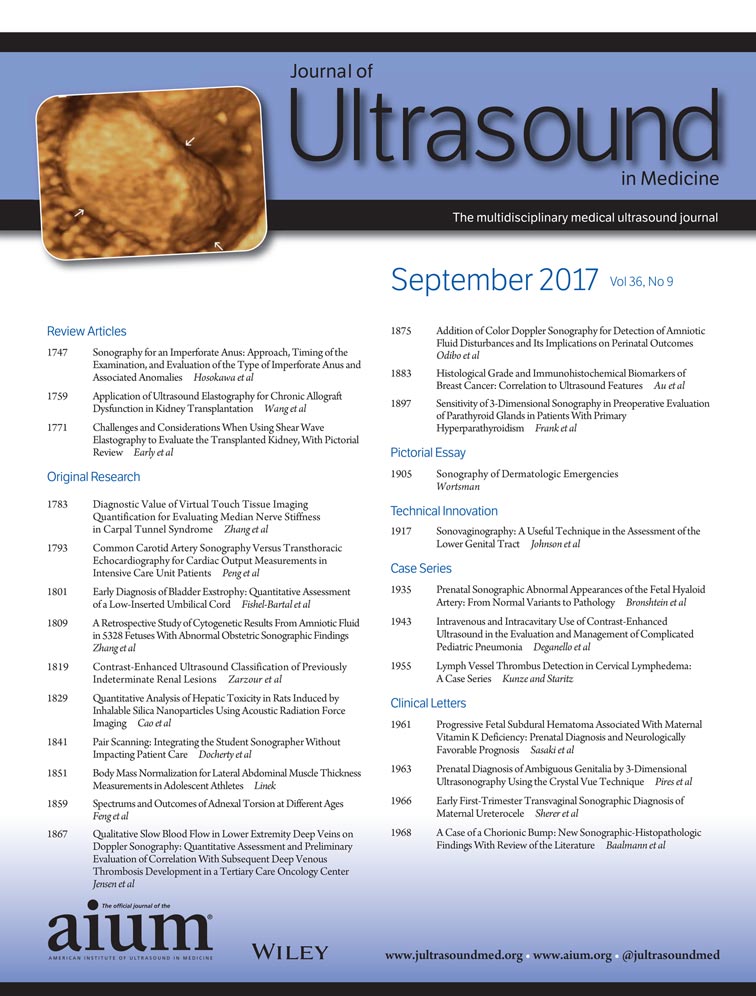Contrast-Enhanced Ultrasound Classification of Previously Indeterminate Renal Lesions
Abstract
Objectives
To determine the utility of contrast-enhanced ultrasound (US) for characterizing renal lesions that were indeterminate on prior imaging.
Methods
This Institutional Review Board–approved retrospective diagnostic accuracy study evaluated all patients who underwent renal contrast-enhanced US examinations from 2006 to 2015 at our tertiary care hospital. We compared the number of lesions definitively characterized by contrast-enhanced US with the indeterminate lesions by prior imaging. The accuracy of contrast-enhanced US was compared with the final diagnosis by histologic examination and follow-up (mean, 3.63 years). Accuracy and agreement estimates were compared with the exact binomial distribution to assess statistical significance.
Results
A total of 134 lesions were evaluated with contrast-enhanced US, and 106 were indeterminate by preceding computed tomography, magnetic resonance imaging, or US. Only the largest lesion per patient was included in analysis. A total of 95.7% (90 of 94) of the previously indeterminate lesions were successfully classified with contrast-enhanced US. The sensitivity was 100% (20 of 20; 95% confidence interval [CI], 83%–100%; P < .0001); specificity was 85.7% (18 of 21; 95% CI, 62%–97%; P = .0026); positive predictive value was 87.0% (20 of 23; 95% CI, 66%–97%; P = .0005); negative predictive value was 100% (18 of 18; 95% CI, 81%–100%; P < .001); and accuracy was 90.2% (37 of 41; 95% CI, 80%–98%; P < .0001).
Conclusions
Contrast-enhanced US has a high likelihood of definitively classifying a renal lesion that is indeterminate by computed tomography, magnetic resonance imaging, or conventional US.




